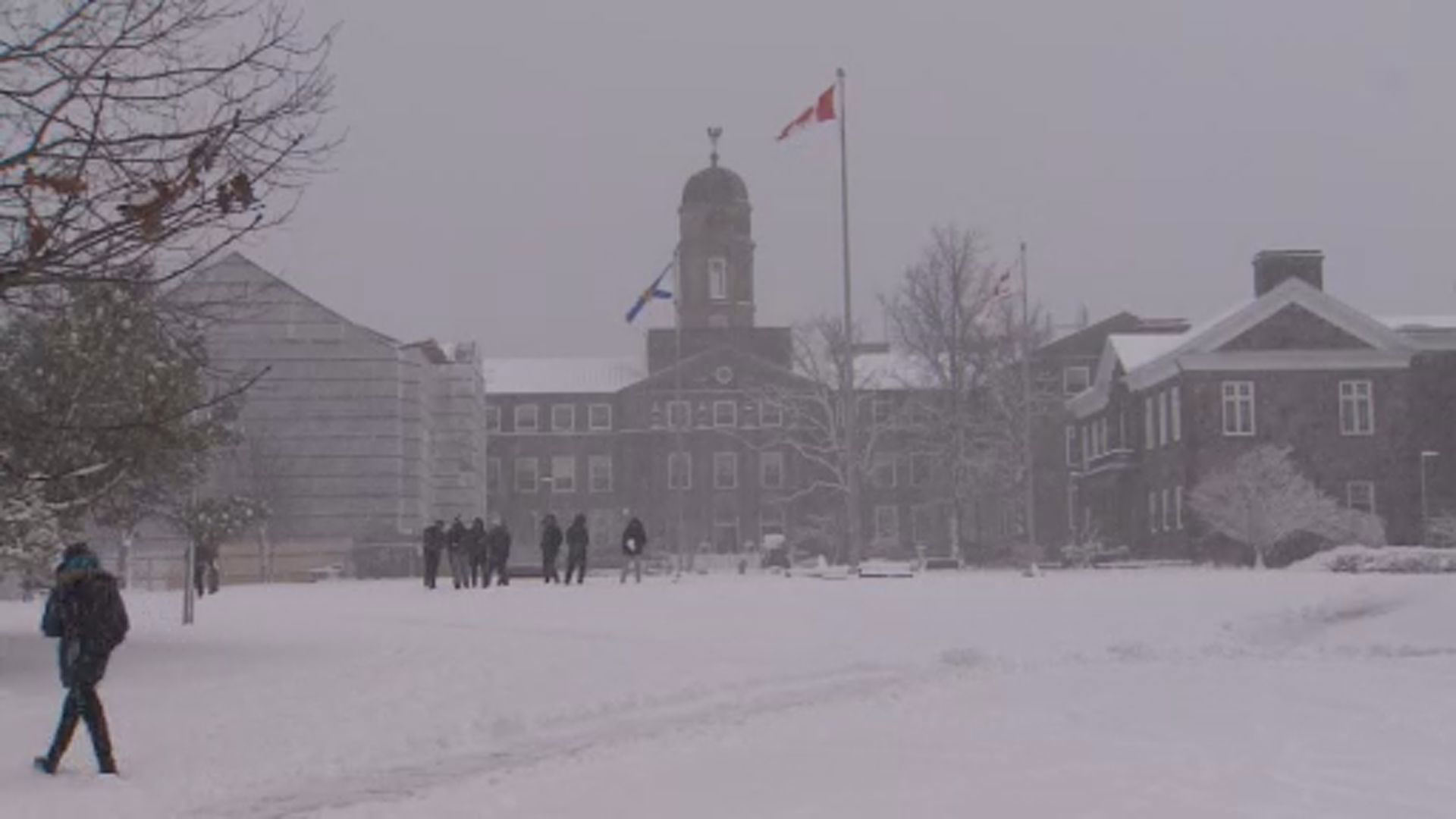Navigating School Delays: A Parent's Guide To Winter Weather Advisories

Table of Contents
Understanding Winter Weather Advisories and Warnings
Winter storm warnings, winter weather advisories, blizzard warnings – the terminology can be confusing! Understanding the differences is crucial for knowing how to respond. The National Weather Service (NWS) issues these alerts to inform the public about impending severe weather.
- Winter Weather Advisory: This indicates that winter weather is likely to affect your area. While not as severe as a warning, it signifies conditions could make travel difficult. School delays or early dismissals are possible under a Winter Weather Advisory.
- Winter Storm Warning: This is a more serious alert. Significant amounts of snow, sleet, or freezing rain are expected, making travel dangerous. School closures are highly likely during a Winter Storm Warning.
- Blizzard Warning: This is the most severe winter weather alert. Sustained winds of 35 mph or greater and considerable falling snow reduce visibility to less than a quarter of a mile for at least three hours. Schools will almost certainly be closed during a Blizzard Warning. Other warnings, like Ice Storm Warnings, indicate the potential for significant icing, again leading to potential school closures.
Knowing the severity level helps you anticipate potential school disruptions. Check the NWS website (weather.gov) and your local news for accurate and up-to-date information.
Staying Informed About School Delays and Closures
Staying informed about school delays and closures is paramount. Schools utilize several methods to communicate these changes. It's crucial to register for all available alerts and check multiple sources to ensure you receive timely information.
- School Website: Most schools post updates on their official websites. Check this frequently, especially during winter weather events.
- School Notification System: Many schools use automated systems to send email or text alerts. Ensure your contact information is up-to-date with the school.
- School App: Some schools utilize dedicated apps for communication. Download and utilize this if your school offers it.
- Social Media: Schools may post updates on their social media pages (Facebook, Twitter, etc.).
- Local News: TV and radio stations provide real-time updates on school closures.
Creating a Backup Plan for School Delays
Preparing a backup plan for school delays ensures minimal disruption to your work and your child’s routine. Consider these options:
- Backup Childcare: Identify family members, friends, neighbors, or paid childcare providers who can care for your child on short notice.
- Work-From-Home: If possible, arrange to work remotely on days when school is delayed or closed.
- Flexible Work Arrangements: Discuss flexible work arrangements with your employer in advance, allowing for greater flexibility during winter weather.
- Emergency Contacts: Compile a list of reliable emergency contacts with their phone numbers readily available.
- Snow Day Activity Bag: Create a bag filled with engaging activities to keep your child entertained during unexpected snow days.
Preparing Your Child for Winter Weather
Ensuring your child is dressed appropriately and aware of winter safety practices is essential.
- Winter Clothing: Dress your child in layers of warm clothing, including hats, gloves, scarves, and waterproof boots. Choose bright, visible clothing to improve visibility.
- School Bus Safety: If your child takes the school bus, discuss the importance of waiting at designated bus stops and being aware of slippery conditions.
- Walking to School: If your child walks to school, emphasize the importance of walking carefully, avoiding icy patches, and staying visible.
Conclusion
Effectively navigating school delays during winter weather requires preparation and proactive communication. By understanding weather advisories, utilizing various notification systems, and having a solid backup plan, parents can minimize disruption and ensure their children's safety and well-being. Don't be caught off guard by winter weather! Prepare now by familiarizing yourself with your school's notification system and creating a comprehensive plan for handling school delays and navigating winter weather advisories. Stay informed and stay safe!

Featured Posts
-
 Trinidad Government Mulls Restrictions On Kartel Show Age And Song Censorship
May 21, 2025
Trinidad Government Mulls Restrictions On Kartel Show Age And Song Censorship
May 21, 2025 -
 Fear Of Layoffs Grips Good Morning America Stars Following Backstage Conflicts
May 21, 2025
Fear Of Layoffs Grips Good Morning America Stars Following Backstage Conflicts
May 21, 2025 -
 Abn Amro Analyse Van De Stijgende Occasionverkoop En De Rol Van Autobezit
May 21, 2025
Abn Amro Analyse Van De Stijgende Occasionverkoop En De Rol Van Autobezit
May 21, 2025 -
 Half Domes New Client Abn Group Victorias Media Strategy
May 21, 2025
Half Domes New Client Abn Group Victorias Media Strategy
May 21, 2025 -
 Half Dome Wins Abn Group Victoria Media Account A New Partnership
May 21, 2025
Half Dome Wins Abn Group Victoria Media Account A New Partnership
May 21, 2025
Latest Posts
-
 Musics Unifying Force Defining The Sound Perimeter
May 22, 2025
Musics Unifying Force Defining The Sound Perimeter
May 22, 2025 -
 Analyzing Liverpools Win Against Psg Arne Slots Take On Alissons Performance
May 22, 2025
Analyzing Liverpools Win Against Psg Arne Slots Take On Alissons Performance
May 22, 2025 -
 Arne Slot Alisson Becker The Key To Liverpools Psg Victory
May 22, 2025
Arne Slot Alisson Becker The Key To Liverpools Psg Victory
May 22, 2025 -
 The Power Of Music Exploring The Sound Perimeter Of Human Connection
May 22, 2025
The Power Of Music Exploring The Sound Perimeter Of Human Connection
May 22, 2025 -
 Arne Slot On Liverpools Victory Over Psg Alisson Beckers Crucial Role
May 22, 2025
Arne Slot On Liverpools Victory Over Psg Alisson Beckers Crucial Role
May 22, 2025
